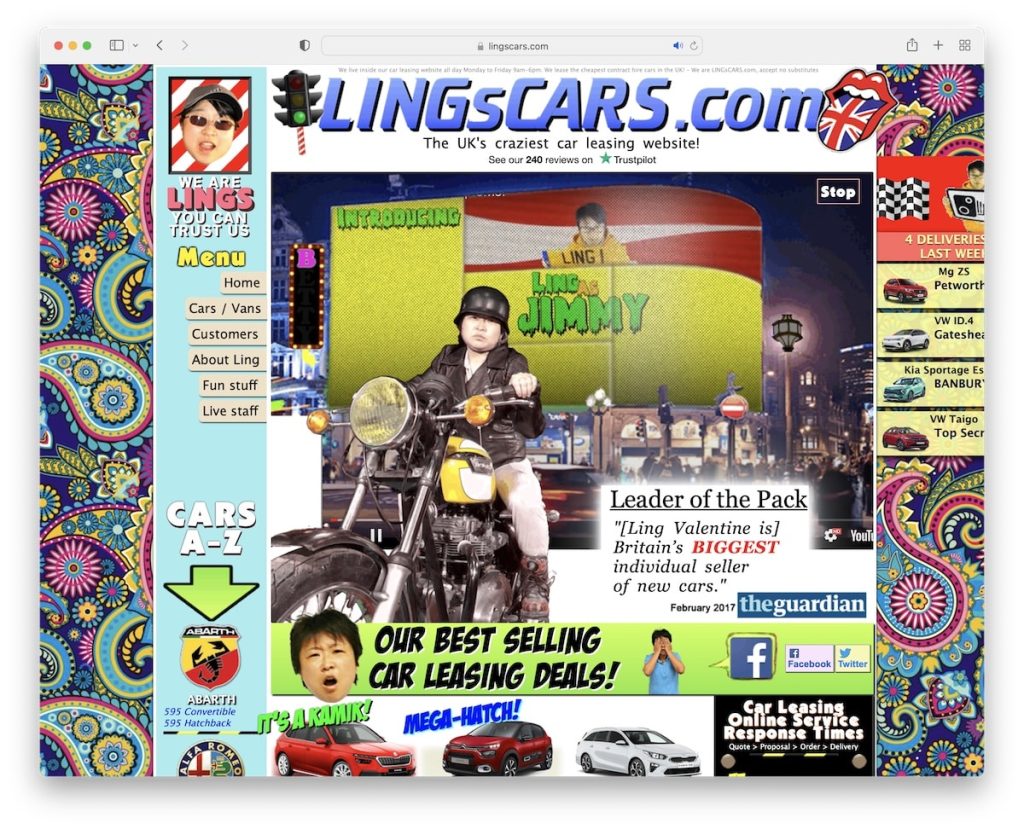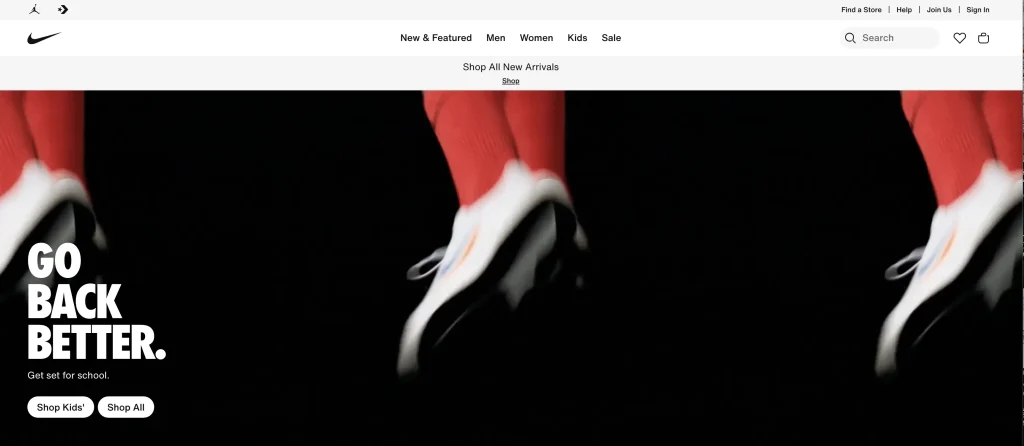Hey folks, Dave Fox here from Starscape SEO. In the digital age, most of us know that having an online presence is crucial for businesses of all sizes.
Many companies invest heavily in creating visually stunning websites, believing that an attractive design will automatically translate into success.
However, as much as some people would bet on this being true, this isn’t necessarily the case.
WHAT?!

In fact, I’d venture to say that an unattractive website that follows basic SEO best practises can often outperform a beautiful website with poor or no SEO.
Here’s why focusing on SEO more than sheer aesthetics is a smarter strategy for long-term success (though you could always make it look good as well).

First, let’s get a few things straight. The title mentions “ugly” and “pretty” websites, but of course the terms “ugly” and “pretty” are relative. Still, they do mean something – they do not mean nothing.
I’ll spell it out for you. An ugly website basically means gaudy, non-graceful, non-aesthetic, slapped together, wonky, and generally the opposite of slick, streamlined, and professional. Look at this:

When I say “pretty” website, that basically just means elegant, functional, simple, and overall aesthetically pleasing.
I’m not talking about a person, or a garment – I’m talking about a website, and websites can be pretty, just like a houseplant or a pet. Here’s Nike’s website, for example.

Also, let’s assume the point of a website is to attract a specific audience, and to attract customers or clients that pay you for whatever it is that you do or make.
People Need To Be Able To Find Your Website Online

No matter how aesthetically pleasing your website is, if no one visits it, it’s game over. See the Eye of Sauron there? If you’re wandering through Mordor, you can’t miss it. Of course, it’s kind of scary, but still…
Mordor aside, SEO is the primary tool to increase your website’s visibility on search engines like Google.
By optimizing your site for relevant keywords, you ensure that potential customers can find your business when searching for products or services you offer.
This increased visibility can lead to higher traffic, more leads, and ultimately, more conversions. This is what we specialize in here at Starscape SEO – you should give us a call (or text)!
Now, imagine a website that looks nice but is totally hollow, or imagine a car that has no engine. You can’t use it or drive it – it’s useless!

That’s what a website is when it has no SEO applied to it – it’s just the outer shell of a car, with nothing inside to make it work. Arguably, the website could still exist, but without basic internal logic, in terms of letting Google know what you’re all about, Google might just think you’re about nothing!
When SEO is applied, no matter how “ugly” the site is, if it works, it works, and Google basically looks at code and what users do when they get there.
Here’s another analogy – imagine there’s a car and it’s really “ugly” (let’s say it’s forest green) but it’s great on gas, never breaks down, has nice knobs and things like that. You can dislike that car all you want, but if someone actually gets in and drives it, they might actually enjoy it.
User Intent and Relevance

Search engines prioritize websites that best match the user’s search intent.
Good SEO practices involve optimizing content to align with what users are searching for.
This means that even if a website isn’t visually appealing, it can still attract visitors if it provides the information or solutions they need.
An unattractive site that answers user queries effectively will outperform a pretty site that lacks relevant content.
Here comes another zany analogy, or hypothetical to get the brain waves firing.
You might say (if you were kind of obnoxious) “Yeah, but at least my website LOOKS NICER than that ugly one I just saw online eww who would use it!”
You might be right, people might be put off by it being a bit clunky and funky, but if it serves the user’s purpose exactly, Google, or any other search engine (Bing), will be forced to look twice at that clunky website, because it was made correctly, and then, it might just rank it highly, to your shock and dismay.
Credibility and Trust

Web users tend to trust websites that appear on the first page of search results. High-ranking sites are perceived as more credible and authoritative.
A website with good SEO can build this trust by consistently ranking well for targeted keywords.
Conversely, a visually stunning site that doesn’t rank well might be perceived as less trustworthy simply because it doesn’t appear in search results.
It seems like weird logic, because you’d think that the cheesy weird website should be trusted less, but hey, maybe the weirdo that made it cares more about meta data than you. Too bad, so sad!
Cost-Effectiveness

Investing in SEO is often more cost-effective than spending large sums on web design.
SEO focuses on organic traffic, which is free compared to paid advertising.
While a beautiful design might require substantial upfront investment and ongoing maintenance, effective SEO can deliver sustained traffic and conversions with less financial outlay over time.
For small businesses and startups, this cost-effectiveness can be a critical advantage.
User Experience (UX) Beyond Aesthetics

SEO isn’t just about keywords and backlinks; it also encompasses user experience factors such as site speed, mobile-friendliness, and easy navigation.
These elements are crucial for retaining visitors and converting them into customers.
An unattractive site can still provide a seamless user experience if it loads quickly, is easy to navigate, and functions well on mobile devices.
A beautiful site that fails in these areas will frustrate users, leading to higher bounce rates and lower conversions.
Data-Driven Decisions

SEO is inherently data-driven. Tools like Google Analytics and Search Console provide insights into how users find and interact with your site.
This data allows you to make informed decisions about content, design changes, and marketing strategies.
A site that prioritizes SEO will continually improve based on these insights, leading to better performance over time.
On the other hand, a focus on aesthetics alone lacks the analytical foundation to drive consistent improvements.
Long-Term Results

SEO is a long-term strategy that builds momentum over time.
Unlike web design trends that can quickly become outdated, the principles of good SEO remain relatively constant.
By continually optimizing your site, you can achieve lasting results that endure beyond the lifespan of a particular design trend.
This stability provides a reliable foundation for business growth, whereas constantly redesigning a site to keep up with aesthetic trends can be costly and disruptive.
Competitive Advantage

In many industries, competition is fierce.
A website with strong SEO can gain a competitive edge by appearing higher in search results than its competitors.
Even if a competitor’s site is more visually appealing, your site will attract more traffic and potential customers if it ranks higher.
This competitive advantage can be crucial, particularly for small businesses trying to establish themselves in a crowded market.
Local SEO and Community Engagement

For businesses that operate locally, local SEO is a powerful tool.
Optimizing for local search terms and using tools like Google My Business can drive local traffic and increase foot traffic to physical locations.
An ugly website with strong local SEO can dominate local search results, attracting nearby customers who are ready to buy.
This targeted approach is often more effective than a beautiful website that doesn’t leverage local SEO strategies.
Conclusion
In the battle between aesthetics and functionality, a website with strong SEO will generally outperform a visually stunning site without SEO.
While design is important, it should not come at the expense of visibility, relevance, and user experience.
Businesses that prioritize SEO will enjoy increased traffic, greater credibility, and better long-term results.
In the ever-evolving digital landscape, ensuring your website is optimized for search engines is the smartest investment you can make.

